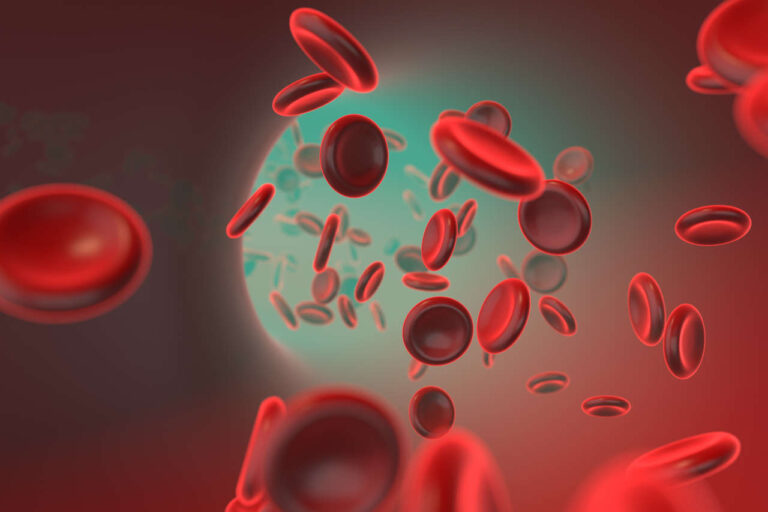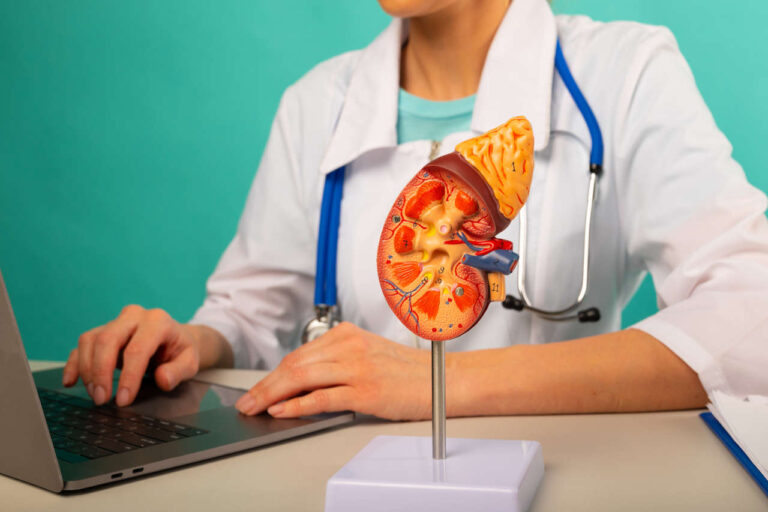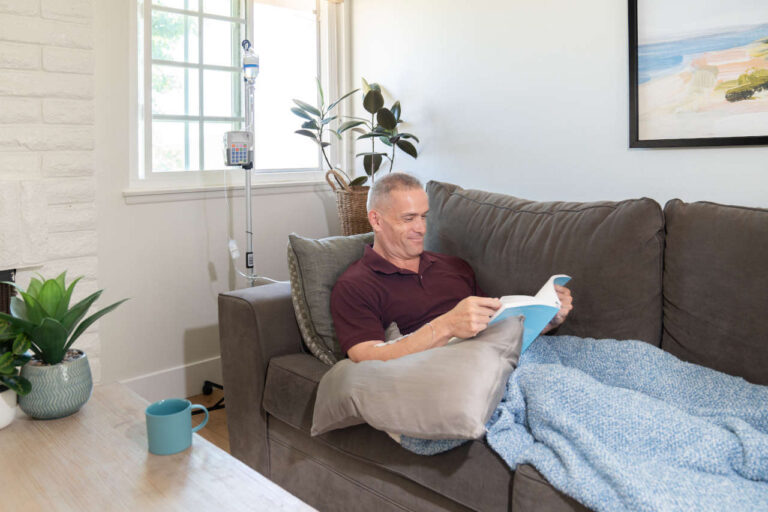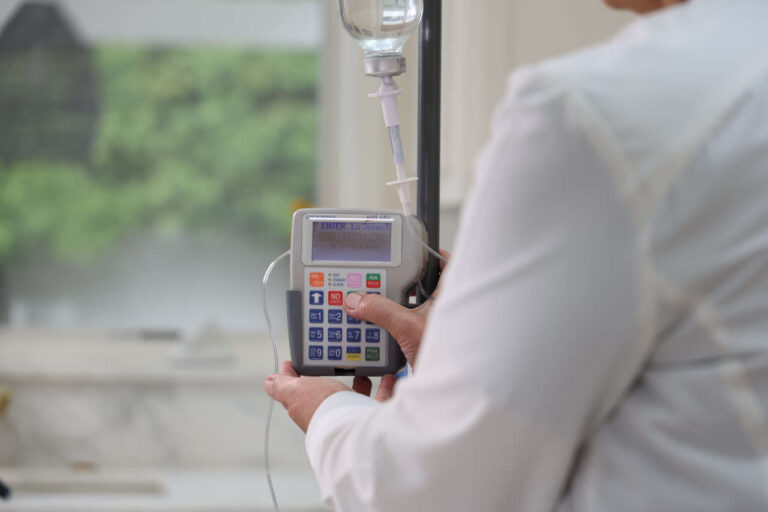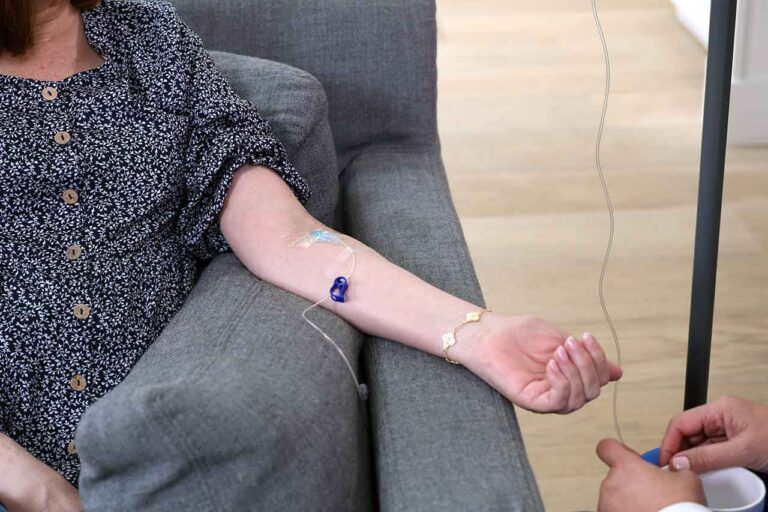
Various case reports have shown that IVIG therapy can be used as a second-line treatment in patients with severe Churg-Strauss syndrome.
Can IVIG help? | Free IVIG Treatment Info
Churg-Strauss syndrome, or CSS, is a rare autoimmune and inflammatory disorder that causes inflammation in the small blood vessels (vasculitis), particularly affecting those in the respiratory system. The inflamed or swollen blood vessels restrict blood flow to the lungs, often leading to asthma, sinusitis, and permanent organ damage in severe cases.
Standard treatments like corticosteroids or surgery are used to treat Churg-Strauss syndrome. However, in some cases, IVIG therapy is recommended as a second-line treatment when the conventional therapies are not sufficient.
This article discusses the basics of Churg-Strauss syndrome, how IVIG can help, and what to expect if you or your loved one are considering IVIG for CSS.
Churg-Strauss Syndrome: A Brief Overview
In 2010, medical experts renamed Churg-Strauss syndrome to eosinophilic granulomatosis with polyangiitis (EGPA) to reflect the three main features of the disease:
- Eosinophilic: Excessive buildup of eosinophils (a type of white blood cell) that leads to inflammation and tissue damage
- Granulomatosis: Formation of granulomas (clusters of immune cells) in affected tissues as a response to inflammation
- Polyangiitis: Inflammation affecting multiple blood vessels throughout the body
Therefore, EGPA is a condition characterized by an excessive buildup of eosinophils, granuloma formation, and inflammation of multiple blood vessels. These factors together lead to symptoms and tissue damage in affected organs, including the lungs, skin, and nerves.
EGPA is more common in people who have asthma or a history of allergies.
Speak to a Specialist
About Copay AssistanceHow Can IVIG Help Patients With Churg-Strauss Syndrome (CSS)?
Various case reports have shown that IVIG therapy can effectively treat patients with CSS when other standard treatments do not yield promising results. Since CSS is part of a group of autoimmune diseases in which the overactive immune system mistakenly targets the body, IVIG can help to modulate the immune system and prevent it from attacking the body.
While the exact working mechanism of IVIG is not clear, researchers believe that IVIG treatment exerts a wide array of effects to improve the quality of life in CSS patients. For instance, IVIG can:
1. Suppress Inflammation
IVIG therapy is known to have anti-inflammatory properties. It can help reduce the inflammation in the blood vessels and eventually reduce the risk of severe organ damage.
2. Neutralize Autoantibodies
IVIG also helps to neutralize or block the activity of autoantibodies. Autoantibodies are abnormal proteins that attack healthy cells. One of these antibodies, called ANCA, is present in some people with EGPA, though not all. Only about 40% of EGPA patients have it.
3. Reduce Blood Eosinophil Levels
Eosinophils are a type of immune cell that is involved in an allergic response or infection. In CSS patients, the level of eosinophils is often double that of normal levels. This leads to the buildup of these cells in the tissues such as the lungs, skin, heart, or nerves, causing inflammation and tissue damage.
In CSS patients, IVIG helps reduce the eosinophil level in the blood. It does this by blocking the activity of eosinophils. This prevents the excessive buildup of eosinophils in the tissues.
How Is IVIG Administered to Patients With Churg-Strauss Syndrome?

IVIG is administered through an intravenous (IV) infusion in a hospital setting or at home. This process takes several hours and may require multiple sessions, depending on the CSS patient’s response and the severity of the symptoms.
After IVIG treatment, you may experience headaches, fatigue, flu-like symptoms, or allergic reactions.
Who Can Receive IVIG Therapy?
Not all CSS patients can receive IVIG therapy. It is generally considered for:
- Patients who showed poor response to standard treatments of CSS
- Patients with compromised immune function (who are at higher risk of developing secondary infections from standard immune-suppressing drugs)
- Patients with relapses or severe organ involvement
The Best IVIG Home Infusion
How Effective Is IVIG for Patients With Churg-Strauss Syndrome (CSS)?
Currently, only a few studies have reported the beneficial effects of IVIG in CSS patients. Based on these studies’ results, IVIG is considered an effective second-line treatment for CSS when conventional therapies are insufficient.
For example, a double-blind, placebo-controlled study demonstrated that IVIG therapy improved vasculitis symptoms and normalized eosinophil count in patients with severe CSS.
Similarly, another case report showed that IVIG therapy improves blood flow to nerves when given in combination with cyclophosphamide to a CSS patient with severe neuropathy. The three sessions of IVIG therapy reduced the eosinophil level, and serum anti-myeloperoxidase ANCA levels decreased to within the normal range. Hence, IVIG therapy can be considered a second-line treatment for CSS patients when standard treatments do not give promising results.
REFERENCES:
- Tsurikisawa, N., Taniguchi, M., Saito, H., Himeno, H., Ishibashi, A., Suzuki, S., & Akiyama, K. (2003). Treatment of Churg-Strauss syndrome with high-dose intravenous immunoglobulin. Annals of Allergy, Asthma & Immunology, 92(1), 80-87. https://doi.org/10.1016/S1081-1206(10)61714-0
- Tsurikisawa, N., Saito, H., Oshikata, C., Tsuburai, T., & Akiyama, K. (2014). High‐dose intravenous immunoglobulin therapy for eosinophilic granulomatosis with polyangiitis. Clinical and Translational Allergy, 4(1). https://doi.org/10.1186/2045-7022-4-38
- Umeda, A., Yamane, T., Takeuchi, J., Imai, Y., Suzuki, K., & Yumura, W. (2014). Marked improvement of Churg–Strauss syndrome neuropathy by intravenous immunoglobulin and cyclophosphamide. Respirology Case Reports, 2(2), 81-84. https://doi.org/10.1002/rcr2.56
- Taniguchi, M., Tsurikisawa, N., Higashi, N., Saito, H., Mita, H., Mori, A., Sakakibara, H., & Akiyama, K. (2006). Treatment for Churg-Strauss Syndrome: Induction of Remission and Efficacy of Intravenous Immunoglobulin Therapy. Allergology International, 56(2), 97-103. https://doi.org/10.2332/allergolint.R-07-142
- Nakamura, M., Yabe, I., Yaguchi, H., Kishimoto, R., Mito, Y., Fujiki, N., Houzen, H., Tsuji-Akimoto, S., Niino, M., & Sasaki, H. (2009). Clinical characterization and successful treatment of 6 patients with Churg–Strauss syndrome-associated neuropathy. Clinical Neurology and Neurosurgery, 111(8), 683-687. https://doi.org/10.1016/j.clineuro.2009.07.004

